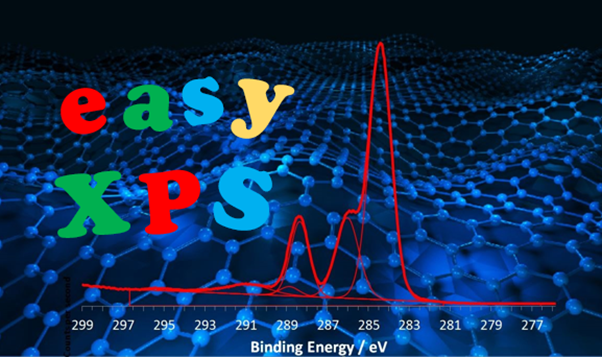Modern consumer devices such as smartphones are complex but easy to use. By contrast, analytical instruments often suffer from a high barrier to entry. This leads to the thought, should analytical instruments have smartphone like ease of use?

The AXIS Supra+, a fully automated photoelectron spectrometer, is significantly simpler to operate than manual, “home-built” systems of past decades.
Improving ease of use is a growing trend in analytical instrumentation. In some cases they are approaching “smartphone” type simplicity, meaning they can be run by non-experts. However, the question of where this leaves the analytical scientist is highly pertinent.
James Strachan, writing in The Analytical Scientist,1 has highlighted that there are advantages to opening up analytical techniques to more researchers. Strachan said: “there is a big gap between the cutting-edge and the truly accessible—and this middle ground must not become an open but confused playing field.”
At Kratos Analytical Ltd. we are acutely aware of our role in lowering the barrier to entry of the modern X-ray photoelectron spectrometer. There has not necessarily been a step change in ease of use; rather, the level of automation and ease of use has increased over several generations of spectrometers.
AXIS Supra+, the current generation of spectrometer from Kratos Analytical, is fully automated, from sample handling to gas admission for gas sputtering. Remote operation from any location is facilitated by this complete automation. Furthermore, it means that the system is easy to operate, even for novice users.
Automation has the key benefits of increasing sample throughput, lowering the cost of ownership and improving reproducibility. However, to quote Bill Gates, “automation applied to an inefficient operation will magnify the inefficiency’ or to paraphrase “garbage-in, garbage-out.” It is important that data acquisition and reporting is done with rigour and understanding.
A growing area within analytical instrumentation is the incorporation of artificial intelligence (AI). Applying AI to XPS surface analysis is still a way off, but the fundamentals exist and are available in the latest release of acquisition software distributed with the AXIS Supra+.
An important but non-trivial requirement is the ability to provide robust peak identification with a high degree of confidence in peak assignment from an XPS survey spectrum. This forms the starting point for any sample analysis. User error and bias are minimized by enhanced computer-derived peak identification from unknown samples.
It also forms the starting point in an automated sample analysis workflow, known as Data-dependent Analysis (DDA) in Kratos' ESCApe software. DDA is an acquisition method that identifies peaks in a survey spectrum and then acquires high-resolution, narrow region spectra from the major components.
A recent survey by Kratos revealed that 89% of XPS users regularly employ the large area survey acquisition mode as the starting point for sample analysis. For an experienced analyst, DDA can be considered a time-saving acquisition method.
For the inexperienced analyst, it provides confidence that elements will be correctly identified and appropriate high-resolution spectra acquired.
The Known-Sample Workflow (KSW) method in ESCApe is a further step in guiding analysis and simplifying spectral acquisition and interpretation. A standard acquisition is progressed to allow charge correction and fitting of pre-defined component models to narrow region spectra.
The Known-Sample Workflow analysis is only appropriate for well-known, highly reproducible samples and currently finds use in QA- and QC-type applications.
In the short-term, Data-dependent acquisition and known sample workflow methods will not replace the knowledge of an experienced analytical scientist. Indeed, the concept of an ‘expert system’ is not new. Dr. Jim Castle [2] has championed this concept since the early 2000s. Over two decades later, the analyst is still probably the single-most important component for materials characterization.
Dr. Castle identifies the starting point in creating an expert system as setting goals, a series of steps leading to a reasonable outcome for the analytical investigation.
This is analogous to the discussion between the subject specialist, usually the owner of the sample, and the analytical scientist responsible for using the spectrometer. Knowledge and experience of the capabilities of the XPS instrument are fundamental to successful sample analysis.
While Kratos has simplified data acquisition by instrument automation, there is still no replacement for the detailed knowledge held by expert analytical scientists. Both manufacturer and user of the XPS instrument are still responsible for educating others.
This education needs to be balanced between XPS application, understanding the information available from the technique and correct use of the instrument to acquire that data, and XPS fundamentals, understanding how to analyze the data generated from the instrument.
As Strachan concludes in The Analytical Scientist,1 education ensures that the next generation of XPS users has the necessary knowledge and skills to apply and, perhaps more importantly, critically assess the latest generation of instruments provided by manufacturers.
To improve the simplicity of spectroscopic techniques, it is important to remember that the expert analyst must struggle with the complexities and embrace the simplicities.
References and More Information
- J. Strachan. Will you play upon this HPLC? The Analytical Scientist Dec.2022 https://theanalyticalscientist.com/issues/1222
-
J.E. Castle and M.A. Baker. The feasibility of an XPS expert system demonstrated by a rule set for carbon contamination. JOURNAL OF ELECTRON SPECTROSCOPY AND RELATED PHENOMENA, Vol.105(2-3), pp.245-256; Dec 1999 DOI: https://doi.org/10.1016/S0368-2048(99)00065-1 
This information has been sourced, reviewed and adapted from materials provided by Kratos Analytical, Ltd..
For more information on this source, please visit Kratos Analytical, Ltd..